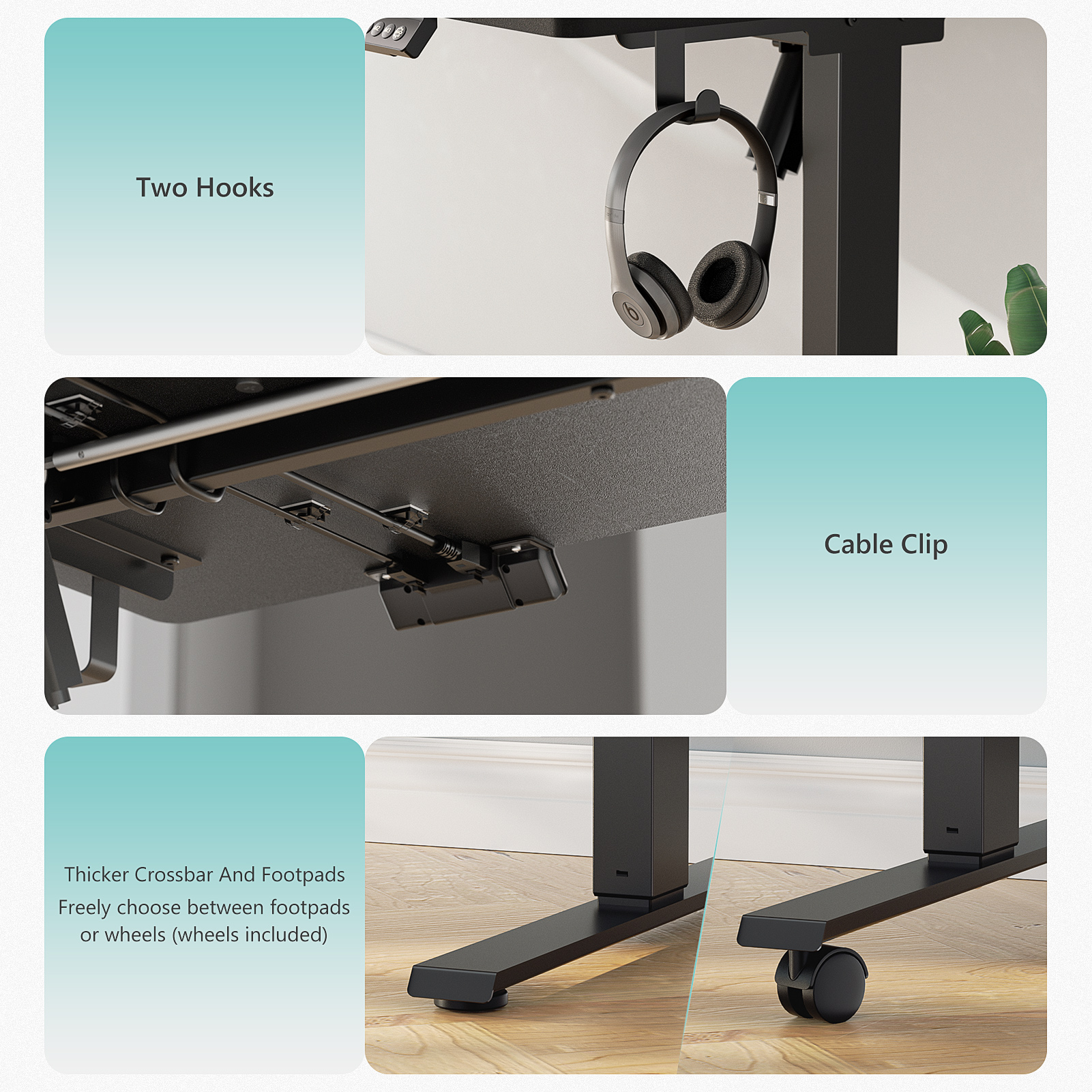If you’re one of the many individuals who spend long hours sitting at a desk, you may already be aware of the toll this can take on your body. One of the most common problems resulting from prolonged sitting is poor circulation. In fact, sitting for extended periods can lead to a number of health issues, including varicose veins, deep vein thrombosis (DVT), and general discomfort. However, using a standing desk can significantly reduce these risks and improve circulation.
Let’s dive into the science behind how a standing desk can boost circulation, and why this simple change in your workspace can lead to better overall health.
The Science of Circulation and Sitting
When you sit for long periods, the blood flow in your legs slows down. This happens because sitting with your knees bent for hours on end causes the blood vessels in your lower body to compress, restricting the free flow of blood. As a result, your heart has to work harder to pump blood through the veins, which can lead to feelings of heaviness, fatigue, and even swelling in your legs.
In severe cases, poor circulation can contribute to the formation of blood clots. Deep vein thrombosis (DVT), for example, is a condition where a clot forms in the deep veins of your legs due to prolonged immobility. If a clot breaks loose and travels to the lungs, it can lead to a potentially fatal pulmonary embolism.
Additionally, sitting for long periods can reduce the efficiency of your cardiovascular system. This isn’t just about the veins in your legs—extended sitting can also increase your risk for heart disease and other conditions related to poor circulation.

How a Standing Desk Improves Circulation
Standing desks offer an effective solution to these problems. By allowing you to alternate between sitting and standing, you promote better blood flow throughout your body. Here’s how:
-
Encouraging Movement: When you stand, you’re naturally more likely to shift your weight and move around. This small but consistent movement helps activate the muscles in your legs, which in turn encourages blood flow. This is a stark contrast to sitting, where the muscles in your legs become relatively inactive and blood circulation slows.
-
Reducing Pressure on Veins: When you’re seated, the pressure on your veins, especially in your legs, increases. This pressure can lead to blood pooling and swelling. Standing helps relieve this pressure, making it easier for blood to flow freely through the veins.
-
Engaging Core and Leg Muscles: When you stand, your body works harder to support its weight. The muscles in your legs, core, and lower back engage more to maintain posture, which helps stimulate circulation. The more your muscles contract and relax throughout the day, the more they help pump blood back toward your heart.
-
Boosting Heart Rate: Standing promotes a higher heart rate than sitting. A faster heart rate means more blood is being pumped throughout your body, which helps improve circulation and overall cardiovascular health. By standing for periods during the day, you allow your body to increase its circulation naturally.
-
Preventing Stagnation: If you sit at a desk all day, your body may begin to feel stiff, especially in the legs and lower back. This stiffness can interfere with normal circulation. By using a standing desk, you can reduce the risk of becoming stiff and stagnant, keeping blood flowing more efficiently.
The Importance of Alternating Between Sitting and Standing
While standing desks are a valuable tool, standing for prolonged periods without movement can also be problematic. Static standing for too long can lead to fatigue, muscle strain, and pressure on your spine. To optimize circulation, it’s crucial to alternate between sitting and standing throughout the day.
The general recommendation is to stand for about 15 to 30 minutes every hour. This gives your legs a break from the constant pressure of sitting while ensuring you don’t overexert yourself by standing for too long.
By using a height-adjustable desk, you can easily transition between sitting and standing with minimal effort. Many standing desks are designed to be quickly adjusted to various heights, allowing you to change positions smoothly and efficiently. This flexibility is key in maintaining healthy circulation and avoiding the negative effects of sitting or standing for too long.
Additional Tips to Maximize Circulation While Using a Standing Desk
While a standing desk is a fantastic starting point, there are a few other strategies that can further enhance circulation:
-
Footrests: Use a footrest to elevate one leg slightly while standing. This can help take the pressure off your veins and encourage better blood flow.
-
Anti-Fatigue Mats: Standing for long periods can put strain on your legs, so consider using an anti-fatigue mat. These mats provide cushioning and reduce the impact on your joints and muscles, making it more comfortable to stand for longer periods.
-
Frequent Movement: Whether you’re sitting or standing, it’s essential to keep moving. Try taking short walking breaks every 20 to 30 minutes. A few steps around your office or a quick stretch can keep your circulation going and prevent stiffness.
-
Stretching: Incorporate simple stretches into your daily routine to promote flexibility and prevent stiffness. Stretching your legs, arms, and back can improve blood flow and keep muscles relaxed.
-
Proper Desk Setup: Ensure your desk and monitor are set up at the correct height to avoid straining your neck, back, and arms. A comfortable workstation encourages better posture, which in turn supports healthy circulation.
Conclusion
In summary, standing desks are an effective way to improve circulation and reduce the risks associated with prolonged sitting. By using a height-adjustable desk, you can easily alternate between sitting and standing, keeping your blood flowing and your body moving throughout the day. Remember to complement this with small movements, stretches, and other ergonomic strategies to further enhance circulation and overall health.
If you’re looking to improve your cardiovascular health, reduce swelling, and prevent issues like varicose veins, a standing desk may be one of the simplest yet most powerful tools you can incorporate into your daily routine.
